I primarily do landscape images; notice I said images instead of photography. I want to present what I felt more that what I saw at the time the photography was taken. It is my firm belief that just about anyone can take a photograph be it a tree or rock or even a fig and it will come out looking like the object what was taken. In other words here’s the tree or meadow I saw isn’t it nice? What I want to convey is the emotion, the emotion of what made me capture the image as well as instill a level of emotion into the viewer. I heard once that good photography incites emotion; that emotion can range from disgust to wonderment. I hope my landscape invokes more of the wonderment side of the scale.
It takes a lot for me to take an image. In some cultures it was once thought that you capture the soul of a person when you take their photograph; in some ways I feel the same way when I do my landscape images. Standing at the edge of a canyon or in a meadow seeing what very few people have the privilege to see and experience is to me very moving experience. What I attempt to do when I capture the image is not only take a decent photograph but know what I want to do with it once I have it. Bottom line for me is that I want to pass on the feeling that I experienced standing there. I want the viewer to feel the soul of image not just see yet another landscape. I want the image to speak out and in some cases shout out to them to the point where the viewer wants to see the location for themselves and experience it first hand. I have a small blog connected to our website and have had many visitors comment that while they may never been in the position to visit the Southwest or for that matter anywhere we photograph, they nevertheless thank us for sharing the beauty and experience. I’ve had people see finished work that hangs in a local gallery at home state that our landscape images invoke emotions and memories that they had long lost. That’s what it’s all about. I consider myself an artist first and photographer a close second.
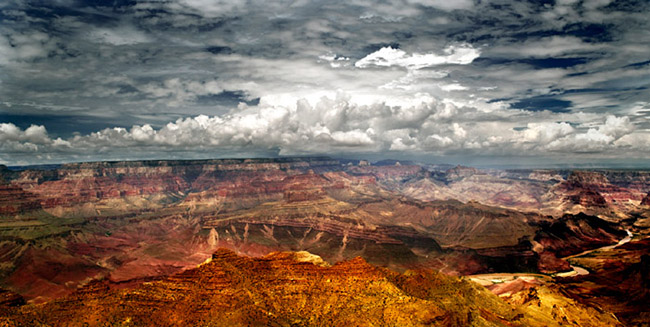
More images and workflow after the jump.
I was privileged to be interviewed by Walter Borchenko for the Phase One January/February 2008 news article. The image above was one that was included. I’d like to discuss what I did to get that finished image.
While the image above is the completed one here’s what it looked like shortly after coming from photomerge in CS3.

While it was close to what I wanted it nevertheless was what I felt or “saw”; in other words it wasn’t what make me what to capture the image.
One of the very first things I normally do when I begin working on an image is to make a duplicate of it and then work on that. I then immediately make a copy of the background and at 100% look for any dust or blemishes to correct. Then I make yet another copy.
It would take much more space and time to fully explain what I did to complete this image however I worked on this for close to 3 days to come this far.
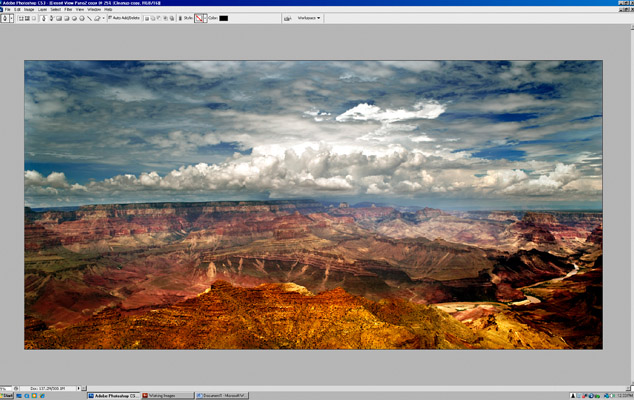
By now I had used the healing and clone tools to clean up any dust or blemishes, worked on levels, brightness, selective color and curves. Along the way I also used masks to either hide or enhance the colors. At this point while I was pleased there still was something missing. After printing it and just staring at it I figured it was the sky; I just didn’t like it.
Trying an experiment I took the image to black & white.
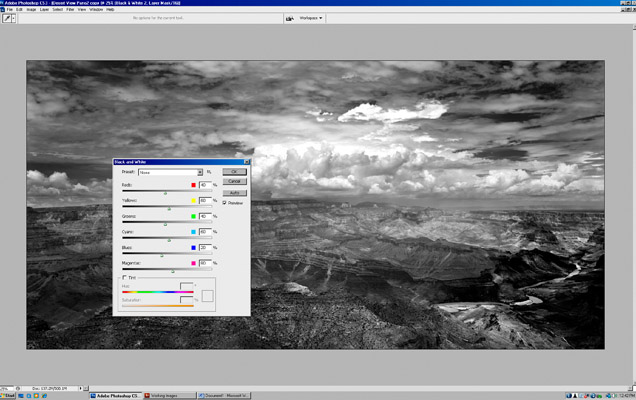
I found that when you do something like this you really need to train your mind and eyes to just look at that portion of the image you want to work on and ignore the rest; in this case I was only looking for an effect on the sky. I wanted a richer, darker sky and whiter clouds. Coming up with this image. The sky was right where I wanted it but I needed to correct the foreground.
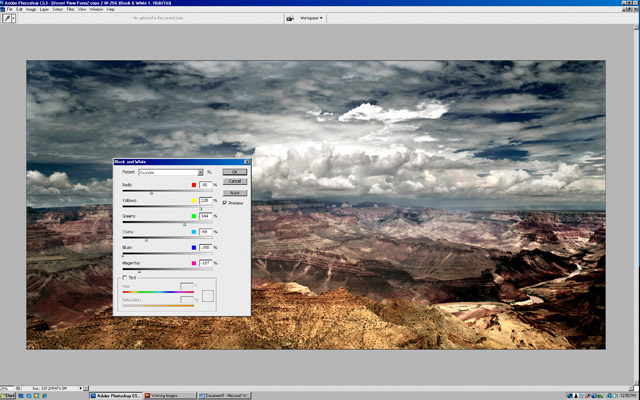
The fix was simple, just add a lay mask and now had the image that I was very pleased with.
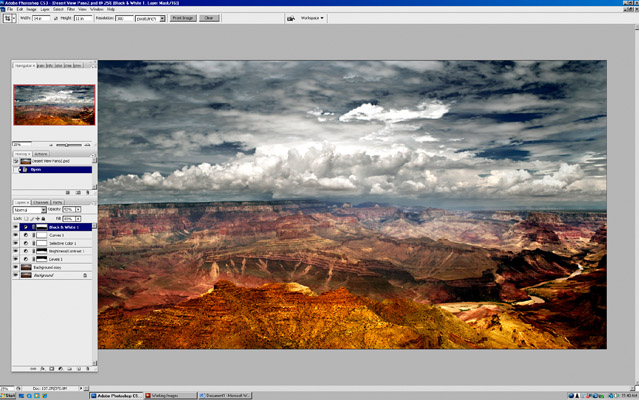

This image has been printed and sold on canvas at a size of 30×60. I’m pleased with it and more importantly my client was pleased.
Here’s another example of what you can do if you just listen to the image, open more than your eyes and aren’t afraid to experiment.
Before:

This is what I saw and felt that made me capture this image.
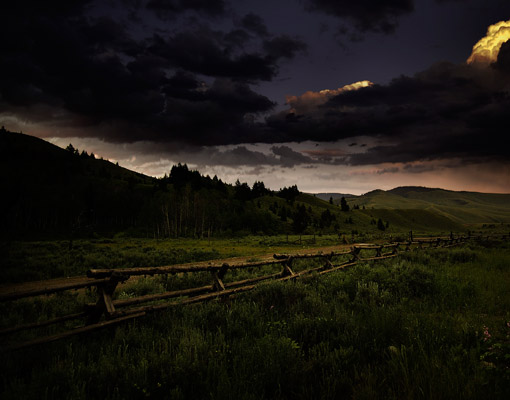
All the images were taken with a Mamiya 645 AFD II and a wonderful Phase One P30+ back. A Mamiya 35mm lens was used in the Desert View panorama (2 shot) while the Mamiya 28mm lens was used for the meadow scene.
I’ll be the very first to admit that I don’t know what I’m doing and in that case I can get away with a heck of a lot. I enjoy experimenting with my images to see just how much it takes to show the image’s soul.
Thank you for allowing me to share.
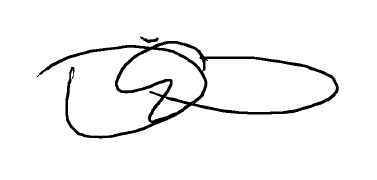
Don Libby
Iron Creek Photography
Tucson Arizona
www.ironcreekphotography.com
www.ironcreekphotography.blogspot.com